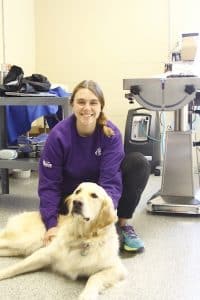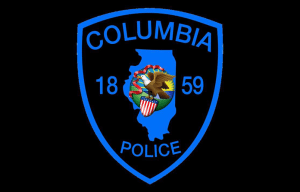Helping Strays hires full-time vet

The new year is off to a positive start at Helping Strays of Monroe County, as operations began Monday in a new surgical suite.
Performing the medical work at the animal shelter located off Hanover Road is Dr. Bailie Bryant, who started in a full-time capacity as veterinarian on Jan. 11.
Animal shelters were not immune to the effects of everything that happened in 2020, but Helping Strays found a way to make sure 2021 would be a banner year.
Helping Strays’ December newsletter said the past year provided “the opportunity to evaluate and improve our situation and intentionally plan for 2021.”
A glaring need at the shelter was on-site medical treatment. Helping Strays has wanted to offer services for some time, and 2020 highlighted the need. While they rescued 1,069 animals last year – a 38 percent increase from 2019 – the impact of COVID-19 reduced availability of veterinarian services needed for incoming and existing animals.
Helping Strays Director Bill Dahlkamp said there were wait times of several months to schedule routine operations, adding that when an urgent need arose, staff would have to call many or all of the shelter’s seven veterinarian office partners in hopes of finding one available to help.
After three years in the making, Dahlkamp said the past year made it clear that an on-site vet was necessary.
“We need to be self-reliant” he noted, pointing out that Dr. Bryant and the new surgery equipment will allow “immediacy of treatment” for shelter animals and make medical care more cost effective.
Bryant began working at Helping Strays in a part-time role at the end of 2020, developing policy and procedure standards for veterinarian care at the shelter. She is now full-time and ready to help rescued and abandoned animals in Monroe County.
“I always wanted to do shelter medicine,” Bryant said, commenting that her work at general practice clinics “didn’t feel like the best fit.”
Bryant hails from Donnelson, Iowa, a small town near the Missouri and Illinois borders. She moved to St. Louis after graduating from the University of Missouri College of Veterinary Medicine in 2018, working at area clinics before accepting the newly-created position at Helping Strays.
With the opening of the surgical suite, Bryant said the shelter now “has the resources and capabilities for medical treatment to do nearly anything.”
The first project Bryant has been tasked with is playing catch-up with needed operations for existing shelter animals, namely spays and neuters.
“We have a lot of animals we have adopted out but they still need to be spayed or neutered before paperwork can be finalized,” Bryant said, admitting “It’s a good problem to have, but it will be nice to do an official adoption.”
Dahlkamp said once they are caught up with existing animals, he wants the shelter to “be a resource to the community,” advising that the rollout of new services will be slow as Helping Strays adjusts to its new normal.
“(The shelter) will have lots of announcements through social media and our website” when services become available and events are happening, Dahlkamp explained.
With the new capabilities, Helping Strays can begin to provide low-cost vaccine, microchip and spay and neuter clinics for the community, focusing on “giving those underserved in the community access to quality care by providing basic health needs for their pets,” according to the newsletter.
Helping Stray’s “Spay Neuter Assistance Program” that provides low-cost vouchers will remain in place, but now services will be provided at the shelter rather than partnering vet offices.
Another venture scheduled to begin in February is the “Trap Neuter Return” program designed to “significantly reduce the number of feral and community cats that have been such an issue in the community for years.”
The program will “alter and microchip” felines and then release them where they were found, but without the ability to reproduce.
Details for this program, like other planned endeavors for 2021, are being developed as Helping Strays adapts to the potential offered by its improvements.
Dahlkamp said the goal is to make Helping Strays a place for the community to “get basic services” for animals, but also saying the shelter is open to the “new opportunities” that will arise as the shelter grows.
He also thanked those who donated to the shelter, pointing out that the newest additions at Helping Strays are more visible than the everyday work the shelter has been doing over the years.
For more information about Helping Strays, find them on Facebook, call 618-939-7389 or visit helpingstrays.org.






